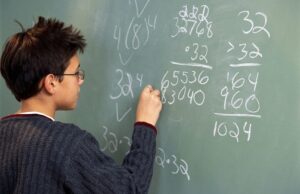As a parent who now finds himself with the responsibility of teaching your child, you may find it difficult to teach mathematical concepts that you have not reviewed for many years, especially when your child is struggling. learning (TA). I hope this article will show you five useful ways to get your child interested in math and help them with math at home.
The mathematics and the anxiety generated by this subject
I teach at the intermediate level and I find that parents often ask me the same question during our initial meetings: What is NEW mathematics? To begin, let me assure you that no new concepts have been invented in mathematics for a very long time (at least at the elementary level – but, like most sciences, mathematics evolves ). So what’s new about this math? It’s just a new way to look at old concepts. Instead of memorizing a concept, we present students with several options. The new mathematics broaden the techniques and strategies of mental calculation.
Students with math learning disabilities often have low self-esteem and anxiety about math. It is therefore useful to approach this subject with confidence and positivism to encourage your child to try to solve the problems that he finds difficult. Students with LDs will find it very helpful to have so many different ways of approaching problems, as it allows them to discover what works best for them. You might find what works best for you too!
Focus on the basics
Don’t understand the Pythagorean theorem? Forgot how to balance an algebra equation? Do not worry. One of the biggest challenges teachers face at the intermediate and senior levels is the fact that a significant number of students still struggle with adding, subtracting, multiplying, and dividing. This does not necessarily mean that students are unable to solve these problems, but they take a long time to do so. For students with LDs or those who have not yet mastered their number facts, it is okay to give them time to problem solve and practice these basic skills. It is not necessary to force your child to memorize the multiplication tables. Better to allow him to use material resources, for example, small pocket charts like a number chart or a chart summarizing multiplication rules that your child can consult – I would avoid over reliance on a calculator, as this will build the ability to make estimates over time). As your child practices multiplication, he can check off the number facts he masters. Placing the multiplication tables in front of your child and encouraging them to look at them will help their understanding of number facts. small pocket charts like a number chart or a chart summarizing multiplication rules that your child can refer to – I would avoid over-reliance on a calculator as this will build the ability to estimate over time). As your child practices multiplication, he can check off the number facts he masters. Placing the multiplication tables in front of your child and encouraging them to look at them will help their understanding of number facts. small pocket charts like a number chart or a chart summarizing multiplication rules that your child can refer to – I would avoid over-reliance on a calculator as this will build the ability to estimate over time). As your child practices multiplication, he can check off the number facts he masters. Placing the multiplication tables in front of your child and encouraging them to look at them will help their understanding of number facts.
Keep it simple, and focus on the basics. There is nothing wrong with replaying these fundamental operations over and over again, in different ways (games, challenges, etc.). It is not necessary to use a worksheet; you can post questions on your fridge every day for your child to answer when they grab something to drink or eat, etc.
Math isn’t just for the classroom
Integrate mathematics into your daily activities with your children. For example, if your child is an elementary school student, ask him to count the grapes you served him in a bowl, then ask him to eat a certain number and then calculate the difference. If your child is in middle school, have them add up the purchases on your grocery receipt and tell you how much money you spent including tax. If you are doing home renovations, ask your child to help you take measurements and do calculations. The higher the grade level, the more complex the abstract concepts. By finding concrete ways to illustrate these concepts (something your child can see or handle), you will help him to see their application in everyday life. If your child is older, you could create a whole unit on graphing and calculating the percentages of the spread of the coronavirus and the increase in those percentages (not to scare him, but to teach him the importance pay attention to statistics).




